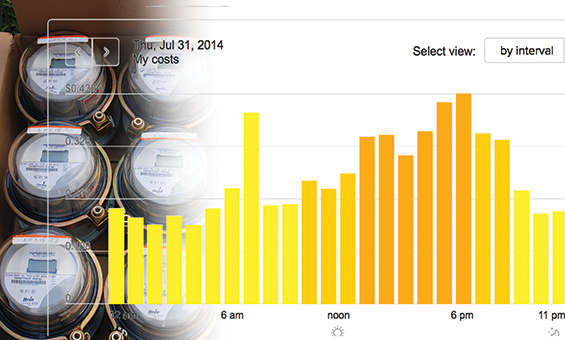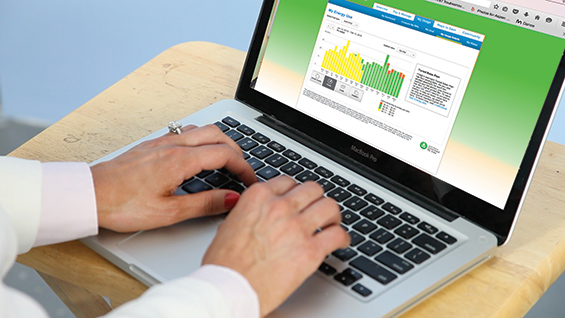Many U.S. utilities have completed, or are nearing completion of, their Advanced Metering Infrastructure (AMI) and Meter Data Management System (MDMS) rollouts. With these implementations completing, the next initiative that a utility should consider is how to leverage the investments in these technologies to gain the significant additional potential benefits available. One approach is to take advantage of infrastructure based solutions such as Connect / Disconnect devices, Demand Response hardware support through Zigbee, and Outage Management solutions. In addition, utilities are recognizing that future solutions for optimizing AMI and MDM Systems come from analyzing the vast amounts of data being collected. Let’s examine the best strategies for greater AMI/MDM utilization.
Getting the most out of your AMI and MDM systems falls into two categories:
- Using the infrastructure for additional services and applications
- Getting more value from the data being captured
The first category is driven by hardware based solutions that will vary depending on the AMI solution implemented and the selected features. The second category is all about efficiently using the data collected.
| Leveraging the AMI/MDM Infrastructure | Utilizing the Data Collected |
| √ Connect / Disconnect | √ Asset Management |
| √ Demand Response (DR) Support | √ Demand Response (DR) Support |
| √ Pre-Paid Metering | √ Volt/VAR Optimization |
| √ Outage Management Support | √ Theft and Fraud Detection |
| √ Two Way Communications | √ Net Metering |
| √ Customer Presentment |
Leveraging the AMI//MDM Infrastructure
The advanced metering infrastructure provides much more than just an automated method to provide monthly billing determinants. An AMI system with smart meters has many other benefits beyond just delivering advanced metering data. The information provided by AMI systems can be used to support improved system operations throughout the enterprise. The AMI infrastructure should be leveraged to optimize the fullest capabilities of the hardware installed.

AMI systems provide volumes of useful data powering applications ranging from consumer portals to engineering studies
The common features to examine include:
Connect / Disconnect
One of the biggest bangs for the buck is handling all service connects and disconnects automatically through the AMI/MDM system (If your meters support this feature). Automatic connect/ disconnect has been implemented at various large utilities and is a great money saving feature. It eliminates the majority of truck-roll costs for simple move-ins and move-outs and for non-payment disconnects. This feature can also be utilized to surgically reduce load and allow Fault Location, Isolation, and Service Restoration (FLISR) transfers to go through.
For the most effective implementation of this feature, integration of the MDM, Customer Information System (CIS) and the work management systems is required. Even before this integration takes place, a simple report along with a manual process can fill the bill.
Demand Response (DR) Support
Many MDM systems can support demand response programs, however the level of support available varies greatly between vendors. At a basic level, the MDMS is the data store for historical consumption information and therefore is key for utilities to track the effectiveness of any event or an overall program. In more sophisticated cases, the MDMS can maintain the asset information for any hardware associated with the demand response program. In some cases the MDM can even process requests to control devices such as thermostats, pump disconnects, etc. Most often, the MDMS will work in conjunction with demand response software to manage the events. This allows the DR system to manage the overall response and measurement while relying on the AMI/MDM to handle the actual control of the devices. This eliminates the need for the DR system to know how to talk to each of the endpoint devices.
Pre-Paid Metering
While pre-paid metering has been popular in the United Kingdom for some time, U.S. utilities have only done minimal investigations into the topics. Some MDM systems have begun to integrate the process of managing pre-paid meters by setting consumption thresholds, monitoring usage against the threshold and alerting at specific thresholds of usage. Implementing a pre-paid metering system does require certain considerations on the part of the utility, including the ability to accept payments around the clock 365 days a year. In addition, the Connect/Disconnect capabilities must be in place on the meters.
Outage Management Support
Identifying outages and verifying restoration is always a high priority area for utilities. Many AMI implementations offer near real-time support for outage management. What many people don’t realize is that when large scale outages occur, the last gasp messages sent by the meters do not always make it through to the head-end system. Network congestion can block a large percentage of the packets from being received. The use of an MDMS can add greatly to this process for the events received. Many MDM systems can filter known service orders to reduce false positives and to filter momentary outages. Some also can identify high priority or bellwether meters that will provide an indication of a circuit or line problem.
Two Way Communications
The AMI communication network can be leveraged to provide two-way communication between control center and distributed sensors, controllers and switches. Often times these networks can be used for communicating with substations and feeder devices.

A meter installer works on the final phase of AMI Installations
The Future Relies on Business Analytics
The second category for greater AMI/MDM utilization relies on getting more out of the data that is already collected. The pure volume of data returned by most AMI systems can be overwhelming. For most utilities implementing AMI and MDM systems, the first order of business is to get the systems delivering the same monthly billing data as before. After the monthly billing is in place, there is a great benefit in taking full advantage of the capabilities of these advanced systems and finding out how to get the most out of the data.
Look at the following areas for getting more from the data you are already collecting:
Asset Management
Meter data management systems are often used to track assets and their locations. Using historical usage data, MDM systems can also be used to validate installs and to alert when potential issues like meter swaps have taken place and the supporting paperwork has not made it into the system. In addition, telemetry brought back from endpoints and network elements can aid asset systems in predicting future failures by supplying large volumes of near real-time data for analysis.
Temperature Detection
Many of the new AMI meters can report on ambient temperature at the meter. Temperature data can highlight issues at an endpoint. Causes for a higher temperature than normal include a short in the meter socket or faulty meter. Comparing current temperature to historical values on like days for the same location can be a good indicator of trouble about to happen so that issues can be addressed before they become a larger problem.
Volt/VAR Optimization
Managing voltages to save energy and reduce peak-driven strains on the grid isn’t a new idea. With the ability to measure voltage at all of the endpoints, smart meters can be a key tool in the process. Utilities are starting to make use of these measurements from metering endpoint in order to avoid dropping voltages so low that they start causing problems for customers at the edge of the grid.
Theft and Fraud Detection
The volume of flags received on most AMI system is staggering. Many AMI operators get quickly overwhelmed by them and then decide since they can’t handle them all they will just ignore them. The best way to handle this is to narrow the search by grouping flags or events that together are a sure indicator of an issue. One example would be receiving a power outage followed by a reverse rotation flag on the same meter. This almost surely indicates that someone has turned the meter upside down.
Net Metering
Utilities commonly send both delivered and received usage channels to the CIS system for billing. Most MDM systems allow the net metering value to be calculated at the MDM and sent as a single value to the CIS.
Customer Presentment
Globally, in-home displays (IHDs) are projected to have a high installed base for customer presentment, largely due to the UK government mandate to install IHDs with smart meters. In the U.S., IHDs appear to be waning in favor of customer portals and custom energy apps. Portals and apps allow customers to use existing devices like cell phones and computers to access the data. Customers do not have to be at home to access the data. There is no additional cost for the utility to implement these devices. The MDMS can supply most if not all of the data to the customer presentment software.

dA consumer checks her energy consumption on a web-based consumer portal
Implementing Business Analytics to Get the Most From AMI/MDM
To get the most of the data coming from the AMI/MDM systems, the utility must first sift through all of the data to decide what data to act upon. Most utilities look to the meter data management system for analysis of data to filter and add a level of intelligence to the data gathered. The key to this is to tailor the filtering into actionable intelligence specific to your utility.
There is no quick and easy solution to this task. Most AMI and MDM systems are designed to deliver the daily or monthly reads to the billing engine. Because of this, the systems’ databases are not designed to do complex data analysis, which means that additional hardware requirements may be needed. Data warehouses enable the ability to keep large amounts of data in an environment that provides the needed horsepower to deliver more than just billing determinants.
Once a utility has the proper environment to operate in, the next hurdle is to understand what to analyze. Business analytics for utilities have traditionally been comprised of business intelligence (BI) for financial and production planning. Today, faced with the prospect of a data deluge resulting from the deployment of smart grid technologies, utilities need to understand the potential for data analytics applications beyond those historic methods. Business analytics, including customer analytics and grid analytics, can leverage AMI and MDM data to improve many aspects of the meter-to-cash process while improving system reliability.
Because most AMI system head-ends only deliver the daily data, MDM systems have become the preferred choice for utilities to manage smart meter data. Over the last couple of years, the MDM field has undergone radical changes in the tools available to analyze data. The three largest MDM companies (Itron, Siemens and Oracle) have all included modules for Business Intelligence to their products.
Key Questions to address when implementing Business Analytics
- Who in the organization needs the business intelligence?
- What are the barriers to adoption of analytics for business intelligence?
- Do I have the resources to act on the data results from business analytics?
- How does this data effect existing business use cases and what needs to change?
- Are there configurations in existing systems that need to change?
Famous Last Words
With the advent of AMI and MDM installations, utilities are faced with the challenge of collecting and processing large amounts of data. In today’s environment with more data coming in on a daily basis than ever before, the key to managing data in a positive way is to focus on the actionable intelligence. Look for the data that drives reduction in risk, optimizes loads, and adds value to the customer experience.
Utilities should first look to grab the low-hanging fruit by utilizing the capabilities native to the AMI and MDM systems. This will give time to examine the best path for applying business analytics to the enhanced data now being received and processed by their systems.
Remember to look first at the information you have the resources to take action on and you will get the most value from your AMI and MDM systems.
About the Author
 Bill Schleicher is Director of AMI/ MDM at UISOL, an Alstom Company. He has 25 years of utility industry experience including serving as Project Manager and Principal Architect for several of the industry’s largest AMI/MDM implementations. His background includes holding senior executive positions with eMeter (now owned by Siemens) and CellNet Data Systems. Schleicher holds a BS in Business Administration
Bill Schleicher is Director of AMI/ MDM at UISOL, an Alstom Company. He has 25 years of utility industry experience including serving as Project Manager and Principal Architect for several of the industry’s largest AMI/MDM implementations. His background includes holding senior executive positions with eMeter (now owned by Siemens) and CellNet Data Systems. Schleicher holds a BS in Business Administration







